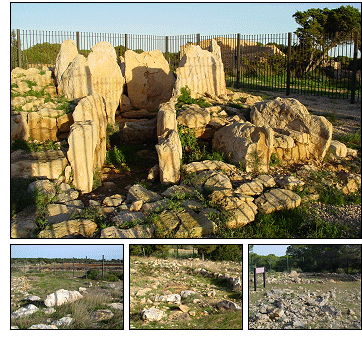Trip round the prehistoric remains on Formentera

Other remains of the first half of the II millennium before Christ that can be visited on Formentera are the megalithic remains of Cap de Barbaria: the circle, the settlement and the cabins. These three megalithic settlements, known scientifically as Cap de Barbaria I, Cap de Barbaria II and Cap de Barbaria III are in a very ruinous state but even so offer valuable information about the first settlers of the island. They are easily accessed from the road that goes from Sant Francesc to the Cap de Barbaria.
The Cova des Riuets, the megalithic wall of sa Cala and the Cova des Fum, all three to be found on la Mola, are also settlements of the same prehistoric era, but are difficult to access, particularly the caves that are in the cliffs of the Mola peninsular.
Photos © BalearWeb
1. Megalithic sepulchre of ca na Costa
2. Cap de Barbaria I: megalithic circle
3. Cap de Barbaria II: megalithic settlement
4. Cap de Barbaria III: megalithic cabins
Datum: 12/01/2003
© 1996-2025 BalearWeb / Formentera - Werbung - Kontaktieren Sie uns - Zugelassene Informationen - Zugänglichkeit
